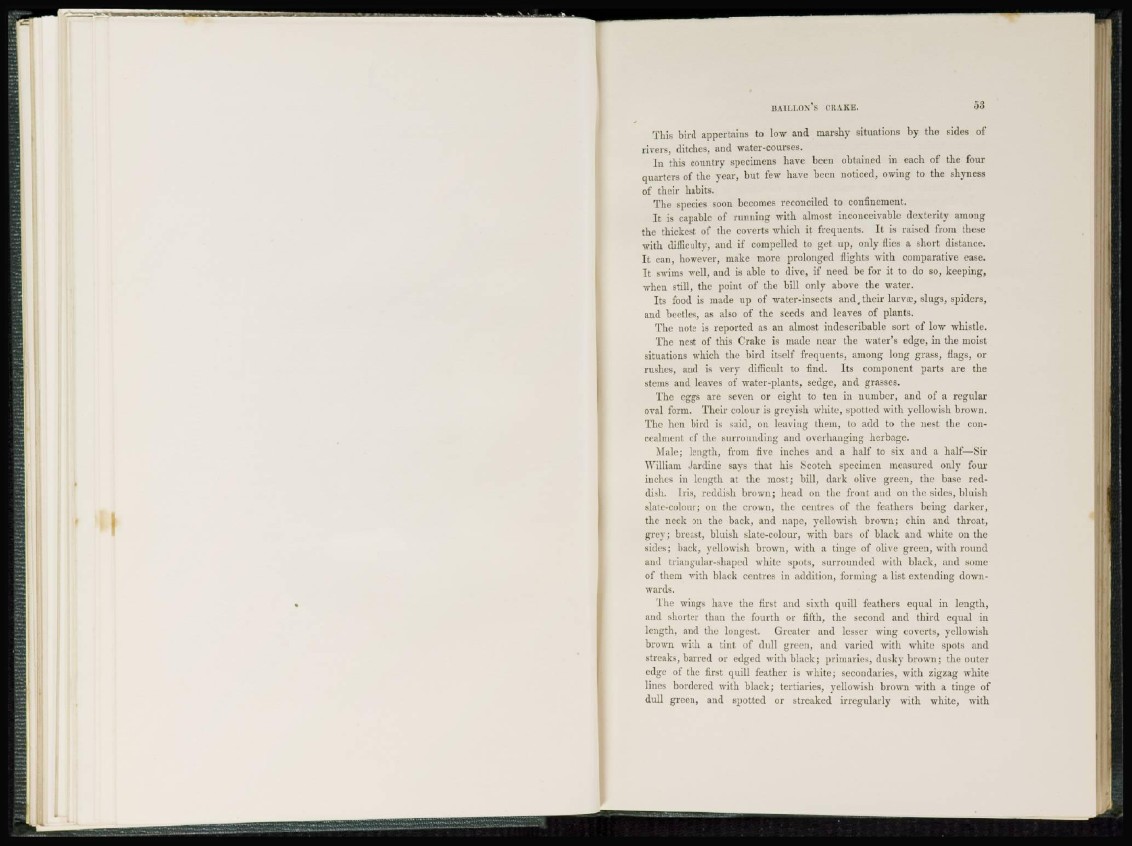
BAILT.Ox's C HAKE.
This bird appertains to low and marshy situations by the sides of
rivers, ditches, and water-courses.
I n this country specimens have been obtained in each of the four
quarters of the year, but few have been noticed, owing to the shyness
of their habits.
The species soon becomes reconciled to confinement.
I t is capable of running with almost inconceivable dexterity among
the thickest of the coverts which it frequents. It is raised from these
with difficulty, and if compelled to get up, only flies a short distance.
I t can, however, make more prolonged flights with comparative ease.
I t swims well, and is able to dive, if need be for it to do so, keeping,
when still, the point of the bill only above the water.
Its food is made up of water-insects and, their larvee, slugs, spiders,
and beetles, as also of the seeds and leaves of plants.
The note is reported as an almost indescribable sort of low whistle.
The nest of this Crake is made near the water's edge, in the moist
situations which the bird itself frequents, among long grass, flags, or
rushes, and is very difficult to find. Its component parts are the
stems and leaves of water-plants, sedge, and grasses.
The eggs are seven or eight to ten in number, and of a regular
oval form. Their colour is greyish white, spotted with yellowish brown.
The hen bird is said, on leaving them, to add to the nest the concealment
of the surrounding and overhanging herbage.
Male; length, from five inches and a half to six and a half—Sir
William Jardine says that his Scotch specimen measured only four
inches in length at the most; bill, dark olive green, the base reddish.
Iris, reddish brown; head on the front and on the sides, bluish
slate-colour; on the crown, the centres of the feathers being darker,
the neck on the back, and nape, yellowish brown; chin and throat,
grey; breast, bluish slate-colour, with bars of black and white on the
sides; back, yellowish brown, with a tinge of olive green, with round
and triangular-shaped white spots, surrounded with black, and some
of them with black centres in addition, forming a list extending downwards.
The wings have the first and sixth quill feathers equal in length,
and shorter than the fourth or fifth, the second and third equal in
length, and the longest. Greater and lesser wing coverts, yellowish
brown with a tint of dull green, and varied with white spots and
streaks, barred or edged with black; primaries, dusky brown; the outer
edge of the first quill feather is white; secondaries, with zigzag white
lines bordered with black; tertiaries, yellowish brown with a tinge of
dull green, and spotted or streaked irregularly with white, with